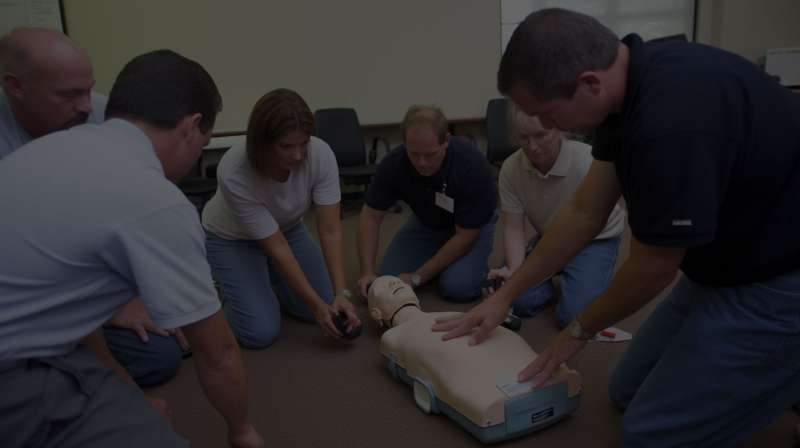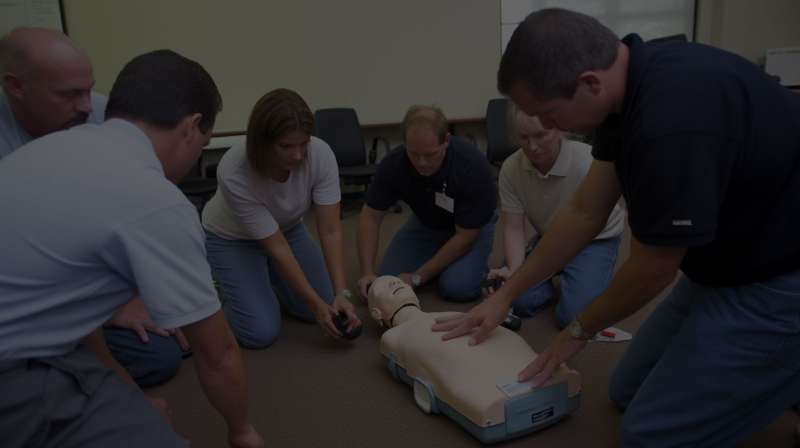The precordial chest thump is a medical procedure sometimes used by healthcare professionals in response to witnessed or monitored ventricular fibrillation or ventricular tachycardia when a defibrillator is not immediately available.
Administering a precordial chest thump is outside the scope of layperson first-aid treatment because it requires training in advanced cardiac life support (ACLS) as a minimum.
Precordial Thump Procedure
The provider’s procedure for delivering the precordial thump involves striking with a clenched fist and striking down on to the middle of a person’s sternum with a single blow. This intentional strike attempts to interrupt a potentially life-threatening rhythm by converting mechanical energy into electrical energy – up to 10 joules.
Precordial thumps are only effective when the arrest is witnessed and used near the onset of ventricular fibrillation (VF) or pulse less ventricular tachycardia (VT).
Three indications needed before delivering a precordial thump
A precordial chest thump should only be attempted once at the onset of cardiac arrest and the provider should then continue with other ACLS techniques including Cardiopulmonary Resuscitation, defibrillation, and appropriate ACLS drugs.
ACLS Success Rate
Despite some cardiologists suggesting that the precordial thump is rarely of benefit, the mechanism was once taught as standard in ACLS and CPR Courses. Students learned that the thump must be delivered within one minute of the onset of cardiac arrest symptoms.
Nonetheless, the precise blow location on the sternum, the time restriction for the delivery, and the increasing likelihood of contraindications - such as commotio cordis - have since resulted in the removal of the procedure from CPR training.
Knowing how hard to hit and where to aim is crucial. Untrained lay rescuers have been documented using the improper technique resulting in further injuries such as breaking the tip of the sternum, worsening of heart rhythms, and cardiac arrest caused by blunt trauma, known as Commotio cordis.
Chest Thump History
The origin of the paramedic chest thump that is often seen in video movies and television is mostly due to an ‘ambulance’ accident around the 1970’s. A patient with unstable cardiac rhythms was being transported to a medical center and suddenly his heart beat became normal after the vehicle hit a speed bump in the road.
Cardiologists subsequently developed and promoted the use of precordial chest thumps as a life saving technique for victims with life-threatening heart arrhythmias.




Share on social media